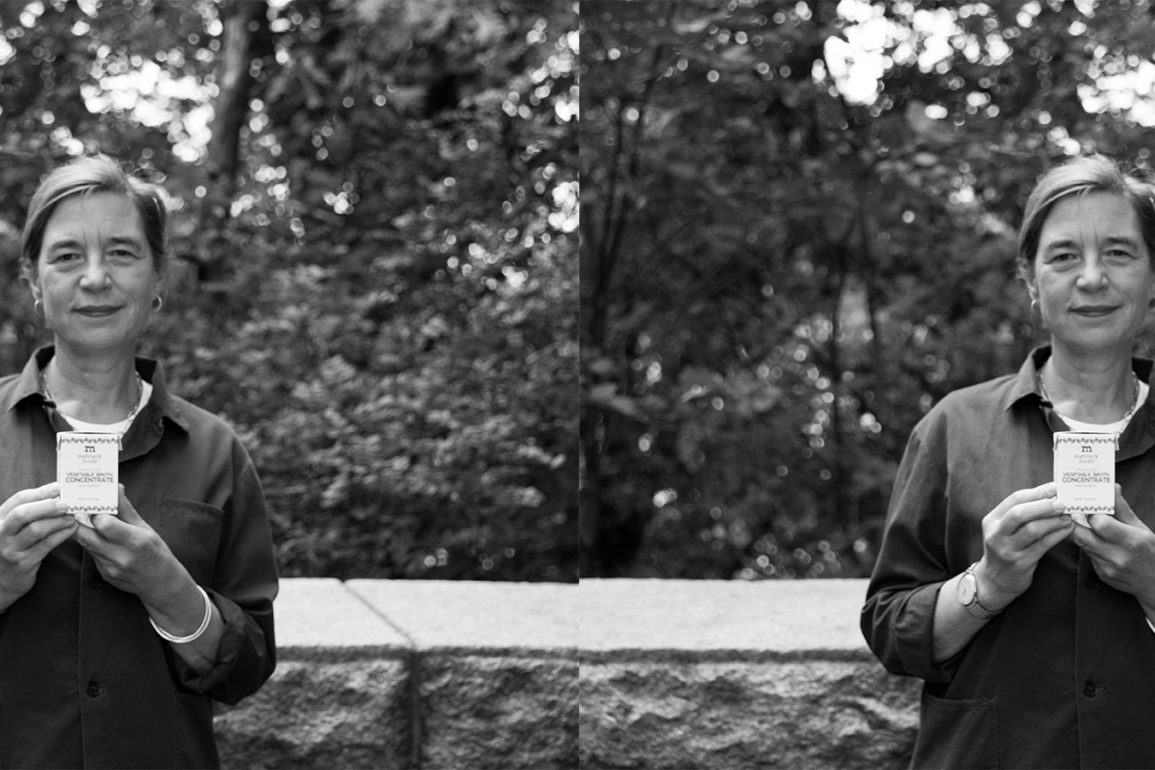Anna Hammond is the CEO and Founder of Matriark Foods, a certified woman-owned company that has made a splash in the culinary world through the introduction of their flagship product: Upcycled Vegetable Broth Concentrate, made from upcycled, fresh-cut vegetable remnants.
Chef’s Roll interviewed Anna about the innovative social impact business, her background, and the future of upcycling food.
Where did the idea for this amazing product come from? Why hasn’t anyone else been making this?
Well first, thanks! It’s crazy to me that no one thought about doing this before. I think most people start developing food products from an idea about what they want to make that’s already quite formed in their head and then they go out and try to source to that idea. I did this in the opposite way – which was to look at a food system that is creating all of this pollution, observe what was being thrown away, and then figure out what I could make from that. I was working with small and mid-scale farmers and also investigating industrial vegetable production. When I saw all those fresh gigantic pieces of celery tops, the first thing that came to mind was vegetable broth.
Before launching Matriark, I built a healthy eating program for youth and families living in New York City public housing. Part of that work involved brokering relationships with farmers in the Hudson Valley to get their surplus produce to students in our classes. There was so much extra produce, so much desire for greater access to healthy food – and a need for affordable shelf-stable healthy ingredients – the business just seemed like an obvious solution. It really grew out of a sense of outrage that so much food is going to waste and so many people want healthy food I had to do something about that.
From where do you source the vegetable remnants?
Our vegetable broth concentrate is made from the tops and bottoms of carrots and celery and the broken onion pieces left over from machines making perfect onion slices for sandwiches. We source these remnants from fresh-cut facilities that produce all the fresh-cut vegetables you see in grocery stores and we developed a business model around that, and all of the compliance necessary to make food-safe products.
What would you say to a chef who likes the idea of upcycled broth, but is content with their current purchasing habits?
Well, I’d say, if you’re a chef who hates to see anything going to waste, that means you want to contribute to a healthy planet, and you want to be able to give your customers what they’re asking for: delicious food that’s nature positive – so you’re going to change your purchasing habits!! But seriously, it’s such a small shift – and it’s the small shifts that really add up.

Besides adding Matriark Broth Concentrate to their order list, obviously, what are some other sustainability hacks that you recommend to chefs looking to incorporate upcycling and other conscientious practices to their operation?
Chefs are already really conscientious about how thin the margins are with food – whether they’re prepping in an environment like public schools or making food for a corporate cafeteria or a restaurant. But rethinking menus to create as little waste as possible overall by offering fewer menu items, creating limits, always having a delicious soup on the menu that uses up all of the vegetable leftovers, creating dishes out of broccoli stalks and cauliflower cores, and conveying to customers (from little kids to bankers), that what you’re offering is better for the environment because of the simplification – that’s a mindset of hacking. Put slightly less on the plate or make the plates themselves slightly smaller, that’s a waste-saving trick. Chefs have so much power to influence consumers – way more power than any politician will ever have! The more that chefs can do to convey the importance of not wasting food through their menuing, the faster we’ll waste less food overall.
The Matriark name pays homage to the women who came before us, overcame challenges, and brought people together, often around a dining table. Who are the matriarchs that you think of in your own life?
My great grandmother, my grandmother, and my mother came to the United States right after the Second World War – as immigrants from Czechoslovakia, and all of them had to make due with very little for quite a while. Their discipline, creativity, and fearlessness got them through some very difficult times –and they were all really generous people and very civic-minded. The limitations and hardships made them stronger and I am absolutely indebted to them for my point of view and drive.

Where did your interest in upcycling food first come from?
You know actually, it’s not food-related. I had a pair of blue-jeans in high school that I absolutely loved. And when they got their first hole, I patched them with a piece of really beautiful Marimekko fabric. I wore those pants all the way through college and by the end of 6 years, they were completely covered with fabric remnants. I still have those pants! I’ve had the mentality that you can make something out of leftovers for a very very long time.
What does the future hold for the food upcycling movement?
I think the future is very bright for upcycling because there is a growing understanding of 3 things: 1, food waste is one of the largest contributors to greenhouse gases 2. It is sickening to waste food when there are millions and millions of people facing food insecurity and diet-related illness, and 3, there is a s**t-ton of money being left on the table when food is thrown out. It’s a place where the word “value” comes together morally, environmentally, and financially. I think we’re seeing an absolute revolution of ideas related to the circular economy. This is exciting and hopeful and will make this world a better place for everyone.




